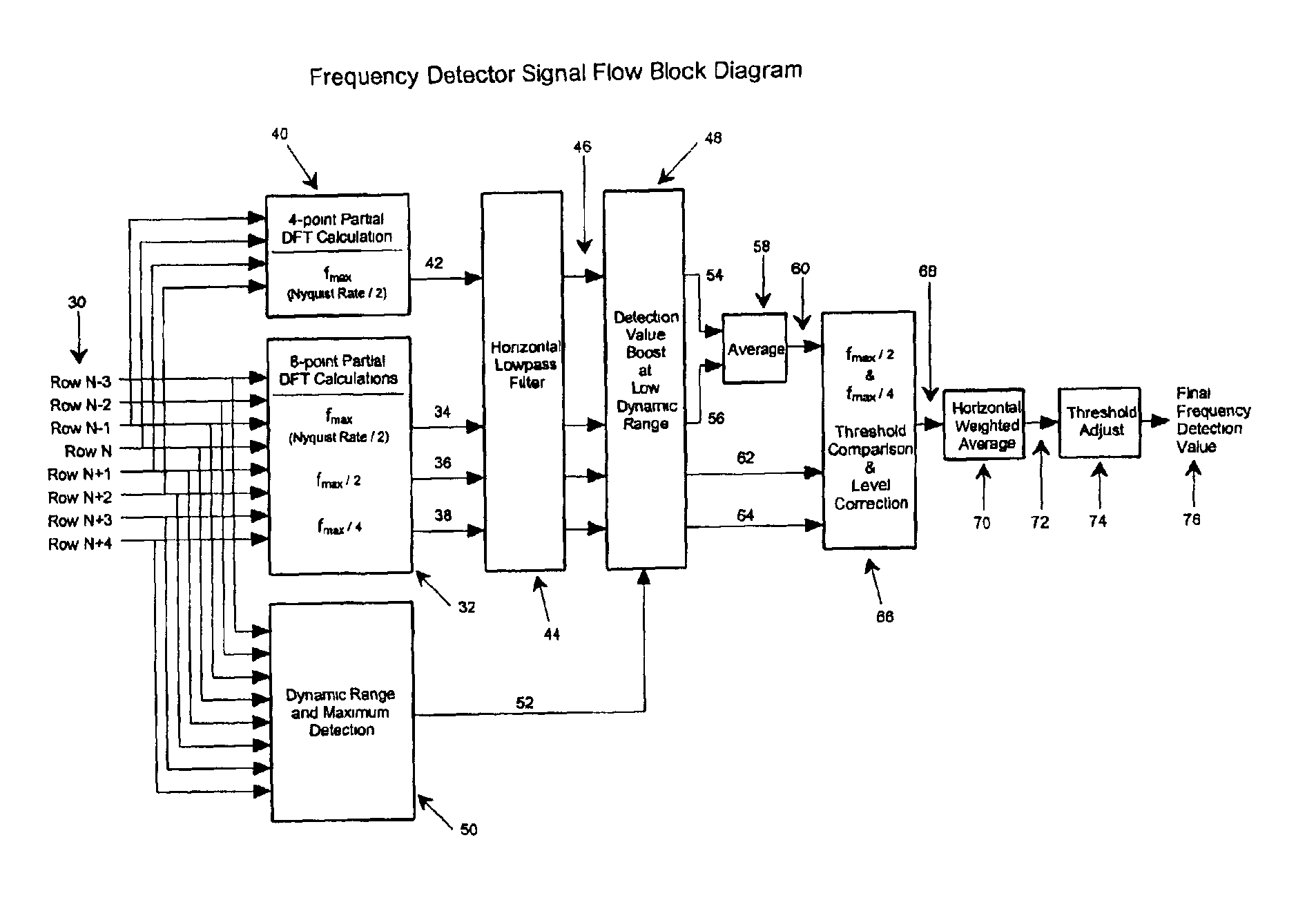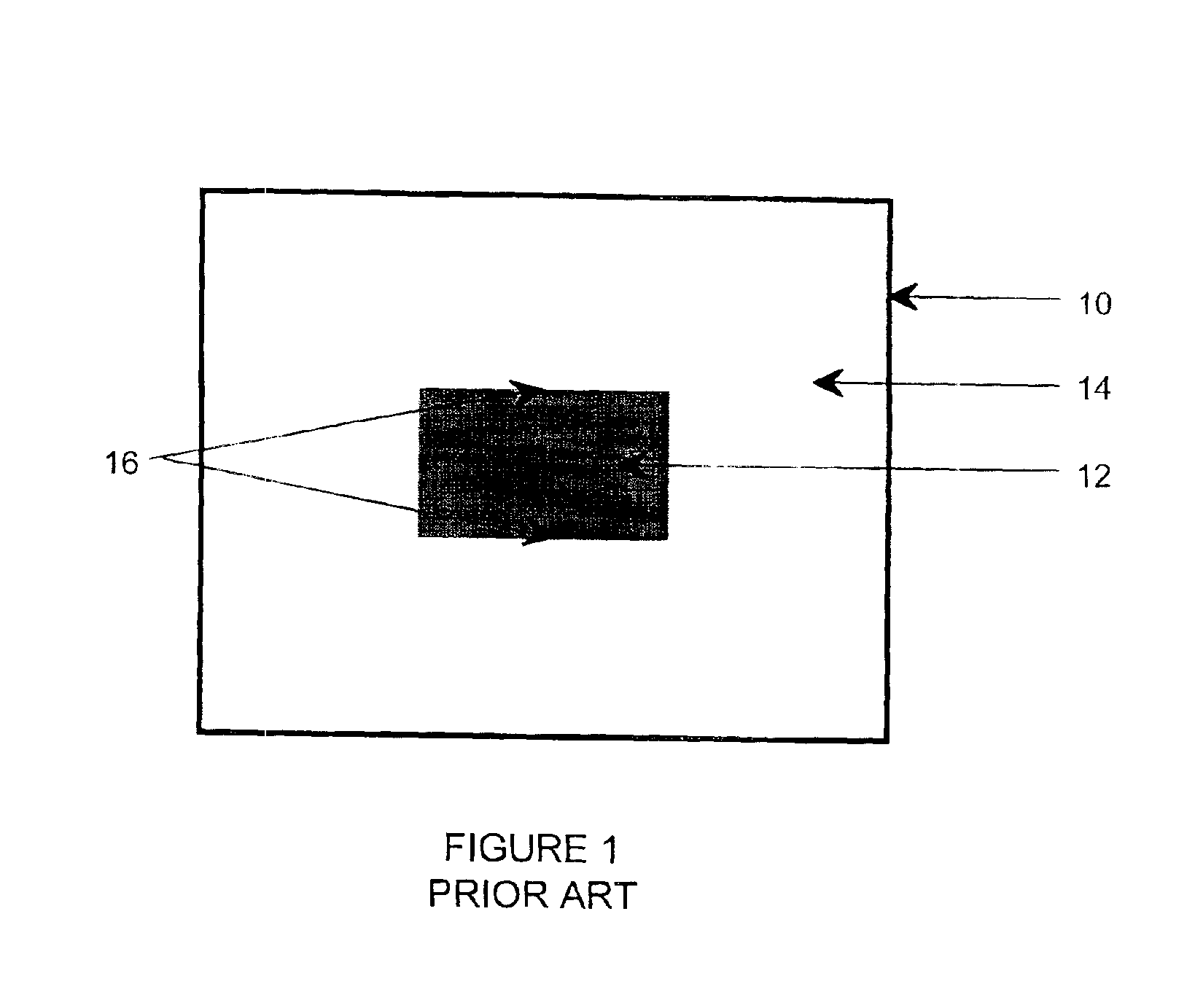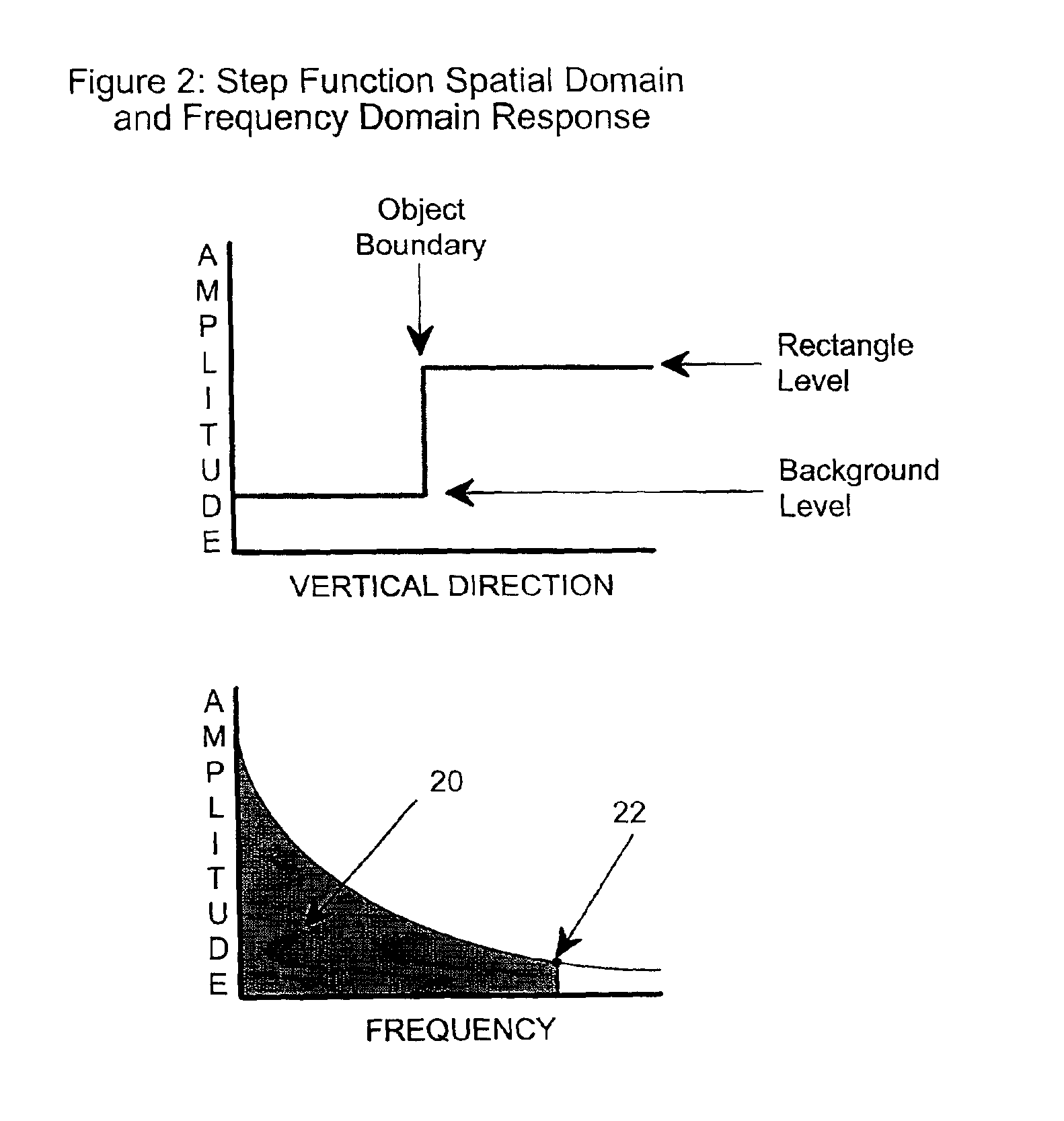Interlace motion artifact detection using vertical frequency detection and analysis
a technology of vertical frequency detection and analysis, applied in the field of video image processing, can solve the problems of interlaced motion artifacts, inaccurate detection, and erroneous detection of high frequencies in certain cases, and achieve the effect of preserving the maximum amount of vertical detail and reducing artifacts
- Summary
- Abstract
- Description
- Claims
- Application Information
AI Technical Summary
Benefits of technology
Problems solved by technology
Method used
Image
Examples
Embodiment Construction
[0025]A method and apparatus for accurate detection of interlace motion artifacts by vertical frequency analysis is disclosed. In the following description, numerous specific details are set forth in order to provide a thorough understanding of the present invention. It will be understood however that the present invention may be practiced without some or all of these specific details. In other instances, well known process operations have not been described in detail in order not to unnecessarily obscure the present invention.
[0026]In a preferred embodiment of the invention, at each pixel location for which a detection of interlaced motion artifacts is needed, calculations for the detection of two specific lower frequencies are performed, along with two calculations for fmax over two varying sample set sizes. A signal flow block diagram of the invention is shown in FIG. 3. Eight vertically aligned luma data samples 30 from a frame formed from the merging of two adjacent fields are ...
PUM
 Login to View More
Login to View More Abstract
Description
Claims
Application Information
 Login to View More
Login to View More - R&D
- Intellectual Property
- Life Sciences
- Materials
- Tech Scout
- Unparalleled Data Quality
- Higher Quality Content
- 60% Fewer Hallucinations
Browse by: Latest US Patents, China's latest patents, Technical Efficacy Thesaurus, Application Domain, Technology Topic, Popular Technical Reports.
© 2025 PatSnap. All rights reserved.Legal|Privacy policy|Modern Slavery Act Transparency Statement|Sitemap|About US| Contact US: help@patsnap.com



